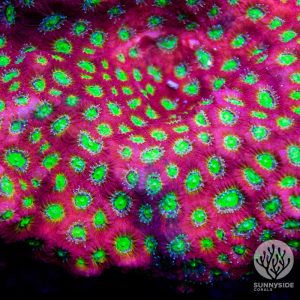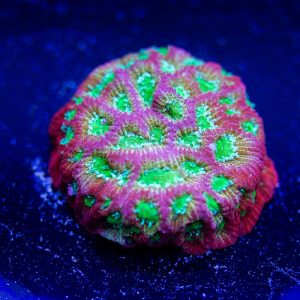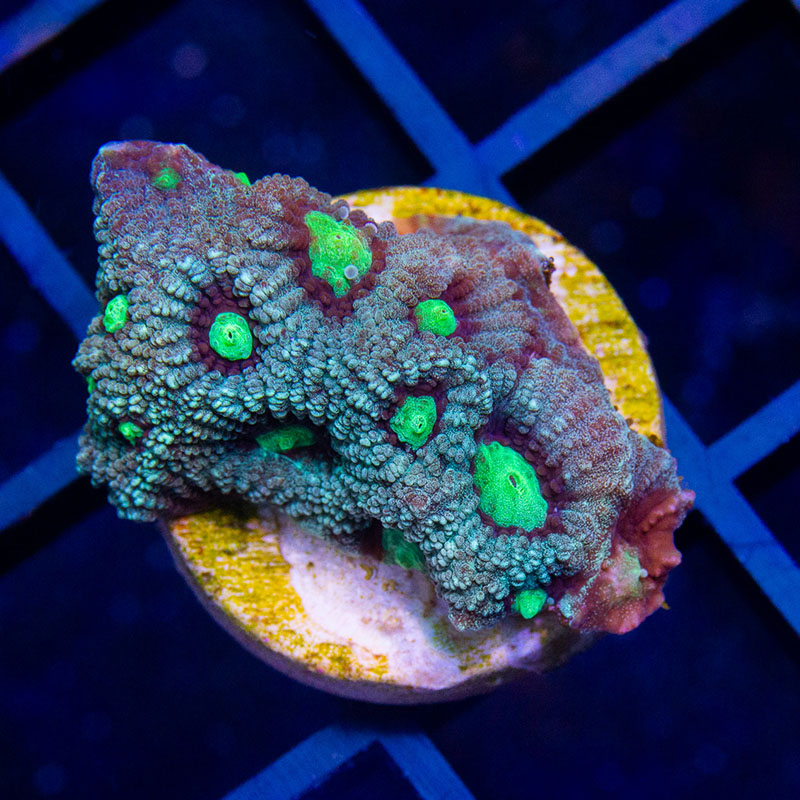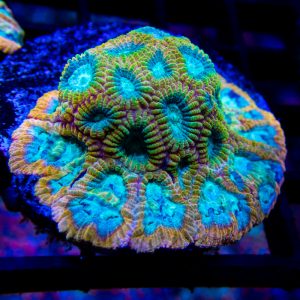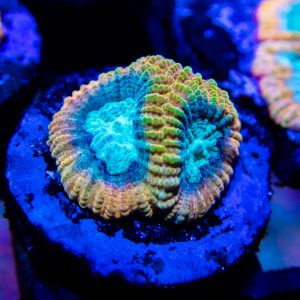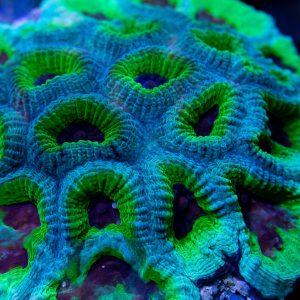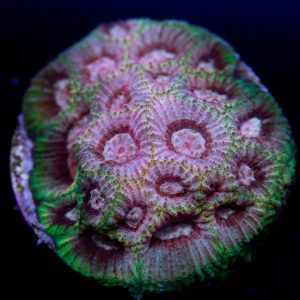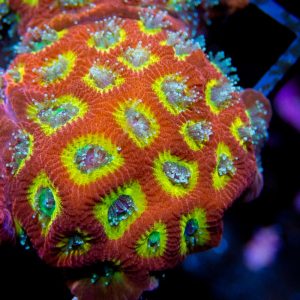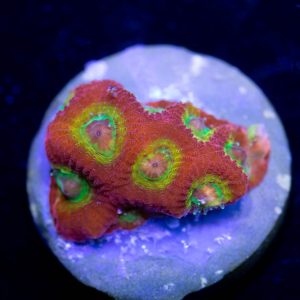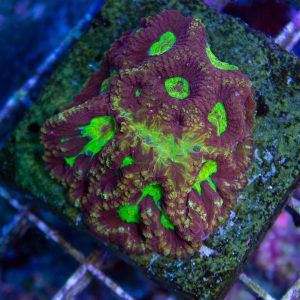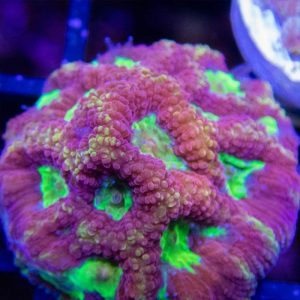What are Favia and Favites?
Favia corals are one of the most popular LPS corals. They can be a relatively hardy coral that can add a lot of color and dimension to your tank. Favia are perfect for newer tanks and colorful enough for any tank. When talking about Favia, it is impossible not to mention Favites which are commonly mistaken for Favia or vis versa. Here is everything you need to know to get started with either!
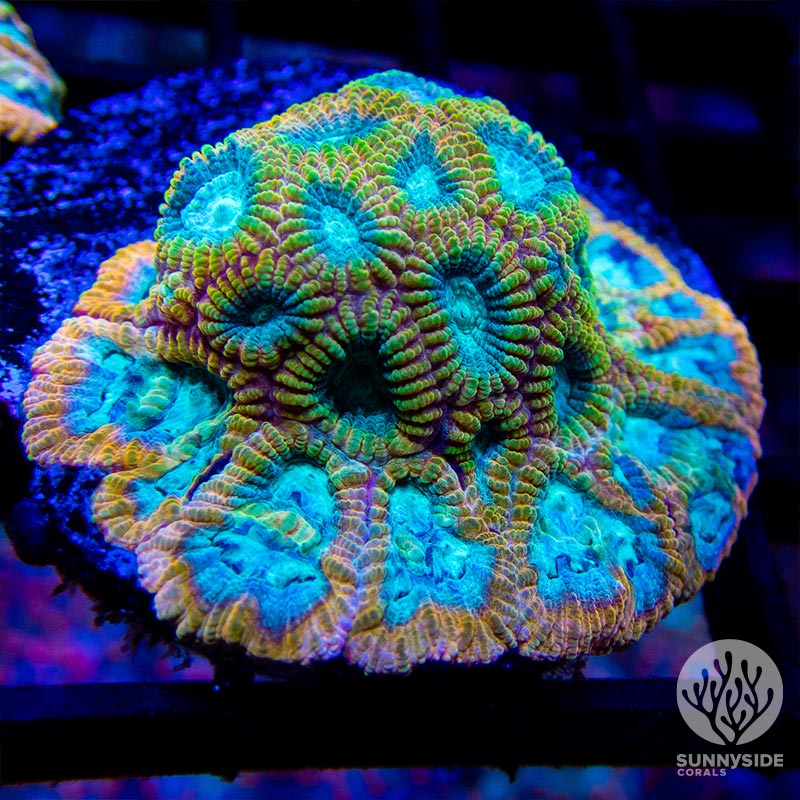
Favia
Knowing the difference between Favia and Favites can be hard. The easiest way to know is to look at their skeletal walls. Favia have two separate Skeletal walls. Meaning that there is typically a divide or bridge between mouths and each Skeletal wall is not touching two mouths. Don’t look at areas with at new growth when trying to determine if it is a Favia or Favite to more correctly determine.
See all our Favia.
Favites
Knowing the difference between Favia and Favites can be hard. The easiest way to know is to look at their skeletal walls. Favites have only one Skeletal wall. Meaning that there are two mouths sharing a Skeletal wall with no bridge section in between them. Don’t look at areas with at new growth when trying to determine if it is a Favia or Favite to more correctly determine.
See all our Favites.
Favia and Favites Coral Care
How much light do Favia and Favites need?
Favia / Favites do well in low to medium lighting. You may find that your Favia / Favites does better with slightly lower lighting depending on your light system. We run a slightly modified A/B schedule with gen 4 Radions and supplement T-5 lighting for all of our corals. Our Favia / Favites are typically towards the bottom of our tanks in slightly shaded areas to avoid strong lighting.
Flow Requirements
Favia / Favites like low to medium flow. Be mindful of what direction your flow hits your Favia / Favites corals. When they release their stingers, they will float in the direction of the flow and could sting corals close by.
How to place Favia / Favites corals
The biggest thing to keep in mind when placing your Favia / Favites is how close other corals are to it. Favia / Favites are a more aggressive coral and they do release long tentacles that can sting and kill surrounding corals. Positioning your Favia / Favites somewhere where the flow won’t blow the sweepers into another coral is critical. make sure it has enough space as well as the correct low to medium flow and medium lighting will help your Favia / Favites grow best.
Favia / Favites Water Parameters
Some Favia / Favites are hardier corals and typically can bounce back from parameter swings. This makes Favia and Favites good corals to start out with. Obviously, the less your tank parameters vary, the healthier your corals will and you will get better growth.
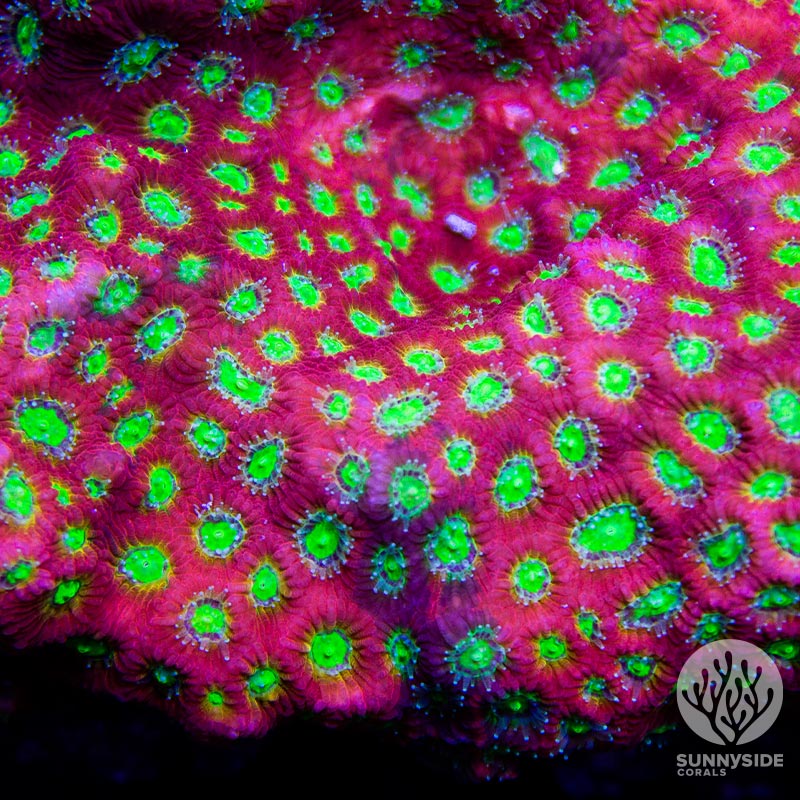
Things to Know Before You Buy a Favia / Favites
Favia / Favites corals are a great coral for anyone in the hobby, even beginners. Most Favia / Favites do well in newer tanks because of their low maintenance requirements. Favia / Favites can be fairly hands-off and low maintenance once your parameters are stable. Just make sure to give them their space in your tank so that they don’t sting any of your other corals.
Other important factors that play a role in the success of growing Favia / Favites corals are the correct amount of lighting and flow. At Sunnyside Corals, we run a modified AB schedule with Gen 4 radions and supplement T-5 lighting on our corals. Our Favia / Favites typically grow best under medium to low light. Typically at the bottom of your tank or on the edges of your tank are the best spots for your Favia / Favites where they can be slightly shaded and on in direct lighting.
Overall Favia / Favites Corals are a great choice and can be very rewarding. Some Favia / Favites are touchier than others as well as have different growth rates. Please be aware of the needs of the specific type of Favia / Favites when buying. In general the more expensive the Favia / Favites, the harder it is to keep and the slower the growth rate.
When can I add Favia / Favites coral to my tank?
Favia / Favites are great for most tanks. They are typically not a great first coral but can be a good one to try early on. They are fairly resilient to changes in the water and fluctuations. This isn’t true for all Favia / Favites but is generally true. As a general rule of thumb, the more expensive the coral, the touchier it will be. Our Tyree War and Peace Favia is a great entry-level Favia to get you started.
Dry Rock
If you started your tank with dry rock you will most likely have to wait 3 to 6 months before you will be able to successfully keep Favia / Favites alive. This is because dry rock can leach phosphate into the water for a very long time. Favia / Favites do well in slightly elevated Phosphate and Nitrate levels and will be a good option for you to test if your tank is ready and your parameters have stabilized are ready for other LPS Corals.
Live Rock
If you started your tank with live rock that process can be dramatically shorter. However, be aware that just because your levels are where they should be, does not mean that your tank is actually ready for any corals. We recommend introducing LPS or Softy corals slowly and monitoring them closely with any new system.
